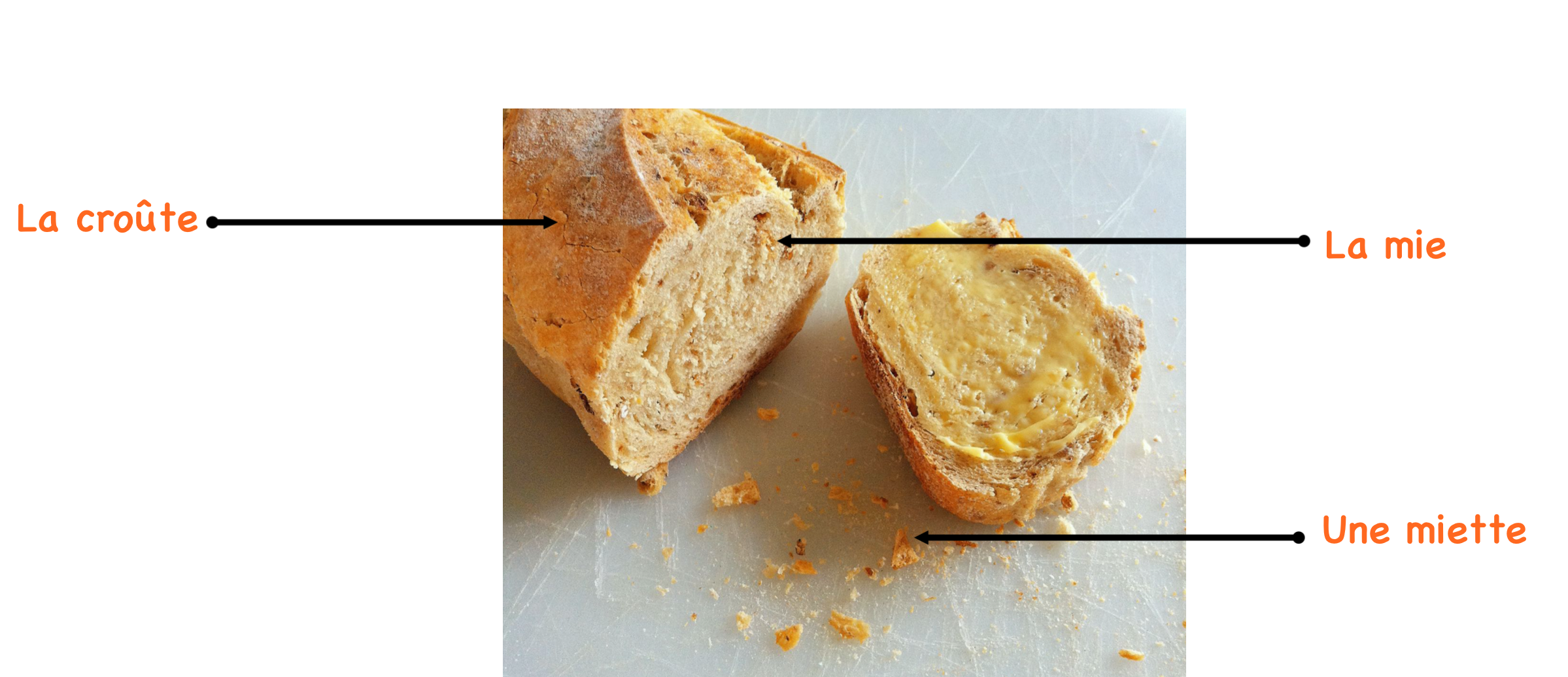
How to Make Croque Madame and Croque Monsieur?
Learn how to make and authentic French Croque Monsieur while learning some French vocabulary!
This cheesy and simple sandwich is the perfect Sunday dinner. It goes perfectly with a side of salad and pourquoi pas some home fries. This is a classic bistro food and the easiest way for parents to make dinner or lunch for the kids. In this recipe we are going the classy way and learning how to make a traditional Croque Monsieur with the famous Sauce béchamel!
Where Does Croque Monsieur Come From?
Well, it does come from France and is a typical dish in French Bistros, because it is fast to make. By the way, did you know that the word Bistro comes from the Russian word býstro, meaning “quickly”? When France was occupied by Russia in 1814, Russian soldiers use to come to French restaurants and asked for the food to be made quickly, hence the creation of bistros. So Croque Monsieur made their apparition around 1910 in several bistros and were mentioned by Marcel Proust himself in his book À l'ombre des jeunes filles en fleurs.
This simple sandwich evolved from a simple cheese sandwich to a more exquisite recipe when béchamel sauce was added. It also developed a feminine counterpart with the Croque Madame, which adds an egg à cheval (on top). Some families (AKA mine) used to prefer to put a slice of tomato on top instead of an egg, to make it “healthier”.
Recipe of Croque Monsieur with Béchamel Sauce
Ingrédients (ingredients)
Pour la béchamel (for the béchamel sauce)
25 g de beurre (1.5 Tbsp of butter)
25 g de farine (1.5 Tbsp of flour)
50 cl de lait (2 cups of milk)
sel, poivre, muscade (salt, pepper, nutmeg)
Pour le Croque Monsieur
8 tranches de pain de mie complet (8 slices of whole wheat bread)
125 g de Comté fraîchement râpé ou Cantal ou gruyère (1/2 cup of Swiss Cheese)
30 g de beurre (2 Tbsp of butter)
200 g de jambon blanc (8 -10 slices of ham)
Noix de muscade (nutmeg)
Sel (salt)
Commencez par la sauce béchamel. Dans une casserole, faites chauffer le beurre et une fois fondu, ajoutez la farine. Mélangez jusqu’à l’obtention d’un roux. Ajoutez le lait tout en remuant et continuer de mélanger pour que le mélange épaississe. Ajoutez du sel, du poivre et de la muscade salon votre got. Start with the Béchamel Sauce. In a sauce pan, heat the butter and use a whisk to make it melt. Keep on high heat. Once the butter is melted, quickly add the flour and whisk until all is turning into a roux. Then add the milk while whisking and keep mixing until it thickens. Then as salt, pepper and the nutmeg to taste. Set aside.
Placez 4 tranches de pain de mie et beurre-les. Ajoutez une fine couche de sauce béchamel et placez le jambon et le fromage rapé. Placez une autre tranche de pain pour fermer le croque monsieur. Lay 4 slices of bread and butter them. Add a thin layer of béchamel sauce, then add the ham and put the cheese on top. Put another slice of bread on top.
Ajoutez de la sauce béchamel sur le dessus du sandwich et ajoutez-y du fromage râpé. Faites cuire 10 minutes à 180 degrés Celsius. Add béchamel on top and grated cheese and put in the over for 10 minutes at 350 degrees Fahrenheit.
Envie d’un Croque Madame? Ajoytez un oeuf (au plat) sur le dessus et voilà ! Want to make it a Croque Madame? Add an over-easy egg on top and voilà!
Bon Appetit!
Let us know how much you love Croque Monsieur in the comments below and don’t hesitate to ask questions or add fun facts, and share with a friend!
How to Make Authentic French Baguettes at home
Learn how to make this iconic French food item at-home with an authentic recipe that uses only 3 ingredients.
So you want to make authentic French baguettes at home? We salute you and love that you arrived at this article because we are passionate about this topic. We feel that making bread from home is one skill you can be truly proud of because, in general, bread is such a primordial food that it has become essential to our daily routine. Whether you use it for a sandwich, as the base of a tartine (kind of an open-faced sandwich common in France), or to eat alongside your favorite dip, bread is an incredible item to know how to make on your own. Of course we can get fancy and make authentic French baguettes that are shaped like the ones you see in store windows or add unique ingredients to make something like a focaccia bread (like the Italians), but bread is something we eat almost daily and we want to show you how. In this post, we want to teach you how to make your own authentic French Baguettes along with teaching you some cool French food vocabulary that will help you navigate through other French Recipes. To get started, we’d like to take you on a quick walk down memory lane for some history of the French Baguette. If you'd rather cut to the chase and skip the history and french lesson this time, you can scroll to the bottom for our authentic French Baguettes recipe.
The History of the French Baguette
Ask a French person how long baguettes have been a part of their culture and you’ll likely get a very puzzled look. That’s because bread has been such an essential part of French culture and cuisine for so long they probably can not remember. Much like the rest of the world, bread is a key piece of many popular dishes, but the baguette itself is very specific and unique to France. We’ll explain. Originally in France, bread was made of whole wheat and had an earthy, brown color. It was baked in round shapes and sold as une miche (a rounded bread loaf). French people were crazy for bread and it made up about 98% of what French people consumed in the 18th Century. To put that into perspective, a French person could eat about 3 pounds of bread a day!
With this enthusiastic consumption of bread, something unique happened. It became a symbol of the ‘essentials’ and, what was originally a miche bread loaf, became transformed into the shape we know as a lengthy baguette. Why did this happen? In typical French fashion, it was due to the Aristocracy who demanded a form of privileged-bread to please the people in power at the time. Compared to the other types of bread, the baguette would make more croûte (crust) which was a delight for the French elite who did not want to eat as much of la mie (the white part inside the bread). To dig a little deeper and shed light on a not-so-happy topic, there is also an arguable element of racism to the baguette. The French elite had a habit of separating themselves from their own people, including people of color. They had this notion that things looked better white. This was because people associated the color white with things that were pure, high end and of a social ‘ascension.’ If you read between the lines, you can paint your own picture there. Essentially, they tweaked the original recipe, which used whole wheat flour (and would be dark in color) and made it whiter when they would pétrir la pâte (knead the dough) very quickly. This actually stripped away the traditional taste of bread which was preferred outside of Paris. It took a while for all of France to welcome la baguette and, while it was traditionally a Parisian creation, it is now a French cliché and must be eaten within the hour (according to specialists).
Have no fear, in another typical French fashion moment, the people eventually protested. After the French Révolution in 1789, one of the demands of the people of France was Le Pain Égalitaire which would legally force bakers in 1793 to bake the same bread for everyone or they would go to prison. Et voila! This is how the baguette for everyone was (legally) born!
The Baguette Today
The French Baguette is so popular worldwide that the French Government, along with the la Confédération nationale de la boulangerie-pâtisserie française (The National Confederation of French Bakeries), decided to apply to make the recipe of the French Baguette as an Intangible Heritage at the UNESCO in 2018.
President Emmanuel Macron said: “ La France est un pays d’excellence dans le pain parce que la baguette est enviée dans le monde entier. Il faut en préserver l’excellence et le savoir faire […]” saying that France is a country of excellence in terms of bread and the baguette is envied around the world and we must protect its excellence and savoir-faire.
To sum that up, bread is like a badge of honor for most of France. It is a way to measure the price of things and understand any inflation that might be happening in a said time. There are also subtle taste and style preferences among French people when it comes to bread. Have you ever thought about how you like your bread? Take a look below and let us know how you prefer bread in the comments section at the end of this article:
Bien cuite - Well Done
Blanche - White (lightly baked)
Croustillante (crunchy)
Complet (whole-wheat)
De campagne (country style)
Anatomy of a French Baguette
There is only two things that make up the anatomy of the French Baguette.
La mie: the white inside of the baguette. French people refer to la mie as being moelleuse (soft), aérée (airy), or consistante (heavy).
Loaves of bread that sliced and are made of only la mie, are called, pain de mie.La croûte: the outside part of the baguette, or the crust. The crust of the baguette is what determines how good a baguette is.
French people refer to la croûte as being croustillante (crunchy).
An Authentic French Baguette Recipe
Baking bread can be seen as a very difficult task. However, our Founder, JP, wanted to teach you a simple recipe he learned when he was 5 years old growing up in France. With this recipe, you will be able to make warm baguettes croustillantes easily using only 3 ingredients (+ water)! If you prefer, you can watch JP teach you step-by-step how to make baguettes via our Instagram LIVE workshop with Time Out New York or keep scrolling to read the recipe.
Read the Recipe
Ingredients
375 grammes de farine (3 cups of flour)
300 ml d’eau tiède (1 1/4 cup of warm water)
1 sachet de levure déshydratée (a packet of dry activated yeast)
1 cuillère à thé de sel (1 tsp of salt)
Tools Needed
un saladier (a mixing bowl)
une cuillère en bois ou une Maryse (a wooden spoon or a spatula)
un moule à baguette, ou une plaque pour le four (a pan for baguettes or a baking tray)
un lèchefrite ou une plaque de cuisson (a drip tray or just another baking tray)
Directions
Dans un bol, mettez le sachet de levure déshydratée et ajouté une partie des 300ml d’eau tiède pour couvrir. Laissez reposer dix (10) à quinze (15) minutes.
In a mixing bowl, add the packet of yeast and add a portion of the 300ml of warm water to the mix. Set aside and let it activate for 10 to 15min.
Ajoutez le reste de l’eau et la cuillère à café de sel.
Then, add the rest of the water and the salt. Stir.
Ajoutez la farine et mélange avec la Maryse ou la cuillère en bois.
Add the flour and stir with a spatula.
Couvrez le saladier avec un torchon propre.
Cover the bowl with a clean & wet kitchen towel.
Laissez reposer dans le four pendant 1h30 dans votre étuve faite maison.
Proof the dough for 1 hour and 30minutes in the oven (turned off).
Une fois la pâte levée, sortez-la du four et formez vos baguette sur le moule et faites de petites incisions sur le dessus. Humidifier vos baguettes.
Once the dough has risen, take it out of the oven and shape your baguettes (if the dough is too sticky, you can add a bit of flour). Make small cuts on the top and spray with water so the dough becomes moist again.
Mettez votre lèchefrite en bas du four et remplissez-le d’eau. Enfournez les baguettes et faites cuire 25 minutes à 225 degrés Celsius jusqu’à ce que les baguettes soient bien dorées.
Add water to the oven baking sheet and put it at the bottom of the oven. Bake your baguettes for 25min at 450 degrees Fahrenheit. Bake until golden brown
Dégustez !
Enjoy!
Merci!
We really hope you enjoyed this article. If you did, click the ‘heart’ icon below and don’t forget to share it with your friends. Now, let’s see what you learned. Click the link below to take our short quiz that reviews some information from this article.







